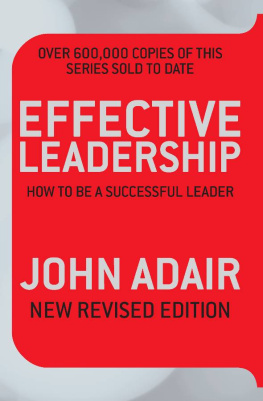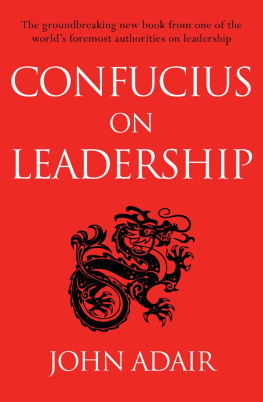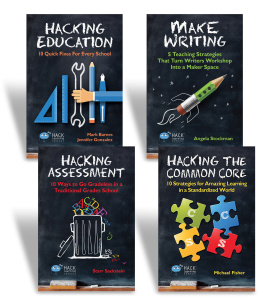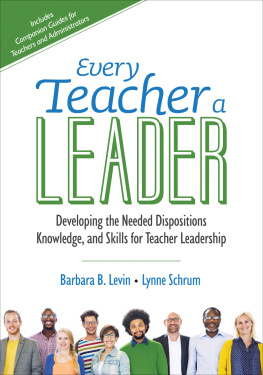


Copyright 2010, Prufrock Press Inc.
Edited by Jennifer Robins
Cover and Layout Design by Marjorie Parker
ISBN-13: 978-1-61821-319-8
No part of this book may be reproduced, translated, stored in a retrieval system, or transmitted, in any form or by any means, electronic, mechanical, photocopying, microfilming, recording, or otherwise, without written permission from the publisher.
At the time of this books publication, all facts and figures cited are the most current available. All telephone numbers, addresses, and website URLs are accurate and active. All publications, organizations, Web sites, and other resources exist as described in the book, and all have been verified. The authors and Prufrock Press Inc. make no warranty or guarantee concerning the information and materials given out by organizations or content found at Web sites, and we are not responsible for any changes that occur after this books publication. If you find an error, please contact Prufrock Press Inc.
 | Prufrock Press Inc. P.O. Box 8813 Waco, TX 76714-8813 Phone: (800) 998-2208 Fax: (800) 240-0333 http://www.prufrock.com |
Table of Contents
Preface
L EADERS are needed in all segments of societyschools, communities, religious groups, business and industry, government, political groups, and the artsand in all types of peoplewomen, men, children, teenagers, young adults, adults, and senior citizens. Where are the great leaders in communities, states, and nations across the globe? Who are our great leaders of today? How has leadership changed? What qualities and skills are needed in leaders for the 21st century? Because of current circumstances facing our nation and world, it is clear that more serious attention should be given to developing young leadersinfluential people who are critical thinkers, creative problem solvers, and strong communicators. It seems that our society has given too little time, interest, and money to developing students in the area of leadership. Just think of what we, as a nation, could accomplish if we committed ourselves to developing leadership skills and working together to make positive changes in todays world!
You most likely have many characteristics that would allow you to benefit from the development of your leadership potential. You probably have a high level of energy, a desire to make a positive difference in the world, the courage to work toward a positive goal, and the ability to solve problems creatively. With some guidance and purposeful direction, you can realize your own strengths as a leader and start putting your ideas into action! Training for leadership will help you build a positive self-concept and experience personal fulfillment. It is also a productive approach for avoiding the negative aspects of your environment. Developing habits of leadership will engage you in meaningful experiences that will help you become a responsible, influential citizen who makes the world a better place for you and all of those around you.
TARGET AUDIENCES FOR THIS BOOK
Although this book has been written for you, the student, it also will be helpful to teachers, administrators, guidance counselors, parents, and community and religious leaders. Youth leadership training is an area that can and should be the responsibility of all of these groups of people.
For teachers, school administrators, and guidance counselors, this book provides a broad-based view of leadership. It may be infused into existing curricula or it can be taught separately as specialized training in leadership. The activities in the book align with the Framework for 21st Century Learning (Partnership for 21st Century Skills, n.d.), particularly in the domains of Learning and Innovation Skills and Life and Career Skills. School personnel also may use this book in developing school clubs and Student Council groups and in planning schoolwide leadership programs and activities.
Parents often seek resources to assist them in helping their children become the best human beings they can be in hopes that they will lead happy, productive lives as they make a positive impact on the world. This is an overwhelming responsibility for parentschildrens very first mentors in leadership. Parents can use the activities included in the book in the home for family discussions and learning.
Community and religious leaders who work directly with students may incorporate the activities into the framework of their organizations, too. Scouting leaders, adult civic groups, local governmental officials, members of chambers of commerce, religious personnel, and others who work with youth may use this book as a guide for understanding students perceptions of leadership and for developing leadership experiences. Many communities across the nation now understand the importance of getting an early start to developing emerging leaders, and the activities in this book can be used toward that goal.
HOW TO USE THIS BOOK
In the Introduction to Leadership section you will find current information on how people develop as leaders, misconceptions of leadership, obstacles to leadership, and new directions and trends in leadership. There is a lot of information to process in this section but it is important for you to understand the concept of leadership as you develop the skills of leadership. You can do it!
Following that section, there are seven chapters related to defining and developing yourself as a leader. Within each chapter you will enjoy reading thoughts about leadership from others your age across the country. We initiated a national survey of youth who have participated in summer leadership development programs to find student perceptions of leadership. In these chapters, youll notice an Ideas section and an Action section. The Ideas section includes suggestions that are taken from the responses of the youth who participated in the national survey. As you read these responses, consider how they are similar to or different from your beliefs about leadership. Discuss them with your friends or people in your group. Each Action section following student responses provides many activities for you to try. Some involve discussions with your friends, while others involve communicating through reading and writing. For those who enjoy creative projects, there are suggestions for you as well. Other activities will guide you as you bring about positive changes in your school, community, or religious organization. All of the activities outlined in the book will help you think about leadership in a serious way and become involved as you develop your own leadership potential. Select the ones that will be most helpful to you.
In the Individual and Group Leadership Accomplishments section, you will find inspiring and amazing stories of leadership in communities and schools shared by young people just like you from across the country. The Leadership Action Journal section in the second half of the book provides reproducible pages for you to record your thoughts and actions. Next, you will find the Leadership Action Forms section. These forms may be helpful with writing letters, making contacts, conducting and analyzing surveys, and developing plans for leadership. The Leadership Quotes section may inspire you and provoke you to think about leadership in many different ways. The final section, Leadership Resources, includes books, resources, organizations, and Web sites for learning more about leadership.
Next page











